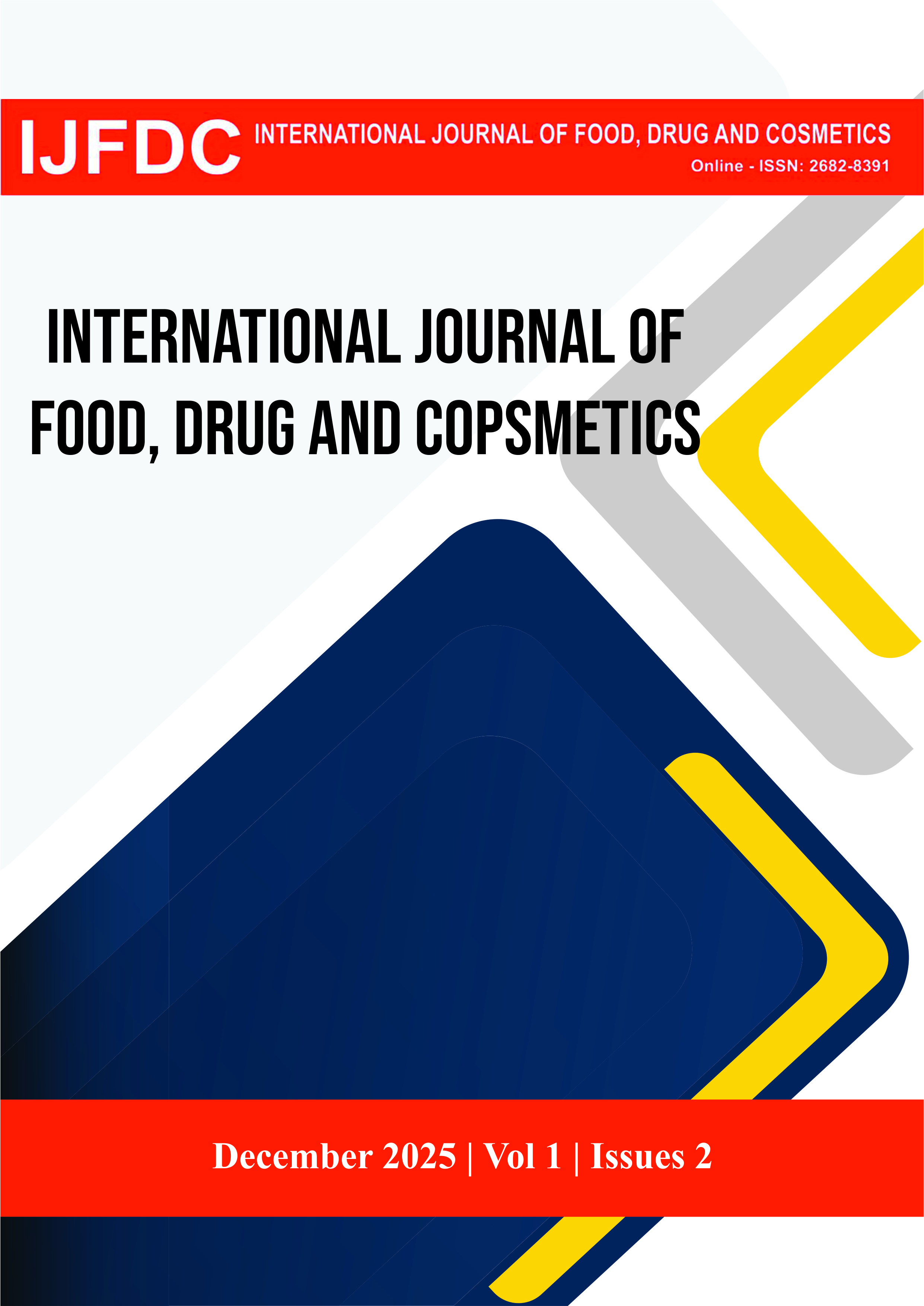A Study on the Determination of Anti-Angiogenesis Potential of Xerochrysum Bracteatum (Everlasting Flower) Ethanolic Crude Extract by Chorioallantoic Membrane Assay of Fertilized Chick Eggs
DOI:
https://doi.org/10.31674/ijfdc.2025.v1i02.001Abstract
This research study is about the anti-angiogenesis potential of Xerochrysumbracteatum (Everlasting) flower ethanolic crude extract. Chorioallantoic membrane assay was utilized, wherein test solutions were introduced directly to the eggs’ membrane via a small opening of the egg shell.
One trial was made for the experiment, using a total of 18 chicken eggs, 6 eggs per group. The eggs were incubated for 10 days. In the experiment, the experimental group was treated with the everlasting ethanolic crude extract (EECE), positive control group - Vitamin A and the negative control group was left untreated. The eggs were re-incubated for 2 days to facilitate the absorption of the drug for the analysis. After re-incubation, the eggs were totally opened and separated to the membrane carefully to avoid blood vessels rupture. AngioTool Software was also used for quantitative assessment of various vessel morphometric and spatial parameters including vessel length and density. The data gathered was determined using One-Way ANOVA and Tukey post-hoc test. The P value which is <0.01 level is considered significant. The results showed that Everlasting Ethanolic Crude Extract (EECE) has a significant difference (number of blood vessels) and comparable effects (blood vessels length and density) with the positive control group (Retinoic Acid) for its anti-angiogenesis activity. Basing on its potency and effect, it is therefore affirmative for anti-angiogenesis.
The recommendations of this study are to conduct a study regarding the components of the Everlasting Flower that is responsible of its antiangiogenic property and also conduct a study regarding the determination of the minimal concentration for its antiangiogenic property. Most importantly, to conduct a study separating the antiangiogenic components and more.
Keywords:
Antiangiogenic, Antiangiogenic, Chorioallantoic membrane assay, Incubation, Blood vessels, Ethanolic crude extract.Downloads
References
Folkman J. Role of angiogenesis in tumor growth and metastasis. Semin Oncol. 2002 Dec;29(6 Suppl 16):15–8.
Wang S, Zheng Z, Weng Y, Yu Y, Zhang D, Fan W, et al. Angiogenesis and anti-angiogenesis activity of Chinese medicinal herbal extracts. Life Sci. 2004 Apr;74(20):2467–78.
Devi SM, Shalini V, Masilamani K, Sivakumar D, Pandian A. Angiosuppresive activity of Leucas aspera (Willd) Linn. using Chicken Chorioallantoic Membrane (CAM) assay. Int J Innov Res Sci Eng Technol (An ISO Certif Organ [Internet]. 2007;3297(11):117–25. Available from: www.ijirset.com
Yang X, Luo P, Yang B, He Q. Antiangiogenesis response of endothelial cells to the antitumour drug 10-methoxy-9-nitrocamptothecin. Pharmacol Res. 2006 Nov;54(5):334–40.
Lin S-P, Lee Y-T, Yang S-H, Miller SA, Chiou S-H, Hung M-C, et al. Colon cancer stem cells resist antiangiogenesis therapy-induced apoptosis. Cancer Lett. 2013 Jan;328(2):226–34.
philippines med herb.
wolfrod.
Sala A, Recio M, Giner RM, Máñez S, Tournier H, Schinella G, et al. Anti-inflammatory and antioxidant properties of Helichrysum italicum. J Pharm Pharmacol. 2002 Mar;54(3):365–71.
Lourens ACU, Reddy D, Başer KHC, Viljoen AM, Van Vuuren SF. In vitro biological activity and essential oil composition of four indigenous South African Helichrysum species. J Ethnopharmacol. 2004 Dec;95(2–3):253–8.
Aalinkeel R., (2008).The dietary bioflavonoid, quercetin, selectively induces apoptosis of prostate cancer cells by down-regulating the expression of heat shock protein 90. Retrieved from: https://www.ncbi.nlm.nih.gov/pubmed/18726985
Aiyegoro O. and Okoh A. (2010).Preliminary phytochemical screening and In vitro antioxidant activities of the aqueous extract of Helichrysum longifolium DC. Retrieved from: https://bmccomplementalternmed.biomedcentral.com/articles/10.1186/1472-6882-10-21#CR13
Amor E. and Herrera A. (2010). Antiangiogenic activity of extracts and fractions from an endemic plant Ardisia pyramidalis (Cav.) Pers. From Bataan, Philippines using Duck in ovo chorioallantoic membrane assay. Retrieved from: http://www.academicjournals.org/article/article1380534170_Herrera%20and%20Amor.pdf
Atherosclerosis: New Insights for the Healthcare Professional: 2013 Edition. Retrieved from: https://books.google.com.ph/books?id=HBS848XS57gC&pg=PA502&lpg=PA502&dq=Many+diseases+are+driven+by+persistent+unregulated+angiogenesis&source=bl&ots=EbAQ4IdQFo&sig=HGHlkVrlBSHepqDyUac1U2odgNs&hl=en&sa=X&ved=0ahUKEwiOmvqjjpDSAhVLKZQKHWKHAyoQ6AEIGjAA#v=onepage&q=Many%20diseases%20are%20driven%20by%20persistent%20unregulated%20angiogenesis&f=false
Auerbach R, et al. (2000) 19: 167–72. Angiogenesis assays: problems and pitfalls. Cancer Metast Rev. Retrieved from: https://www.ncbi.nlm.nih.gov/pubmed/11191056




